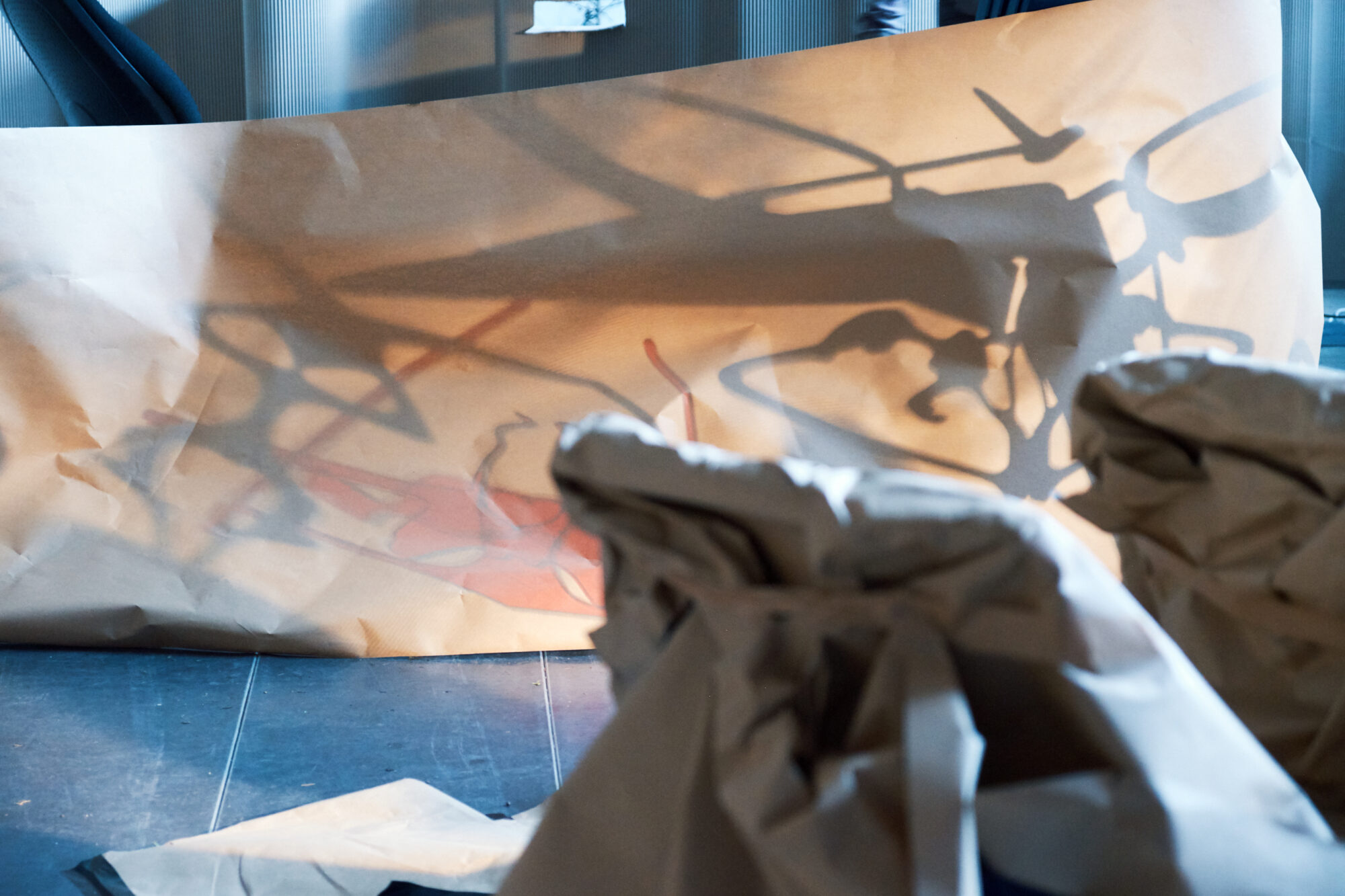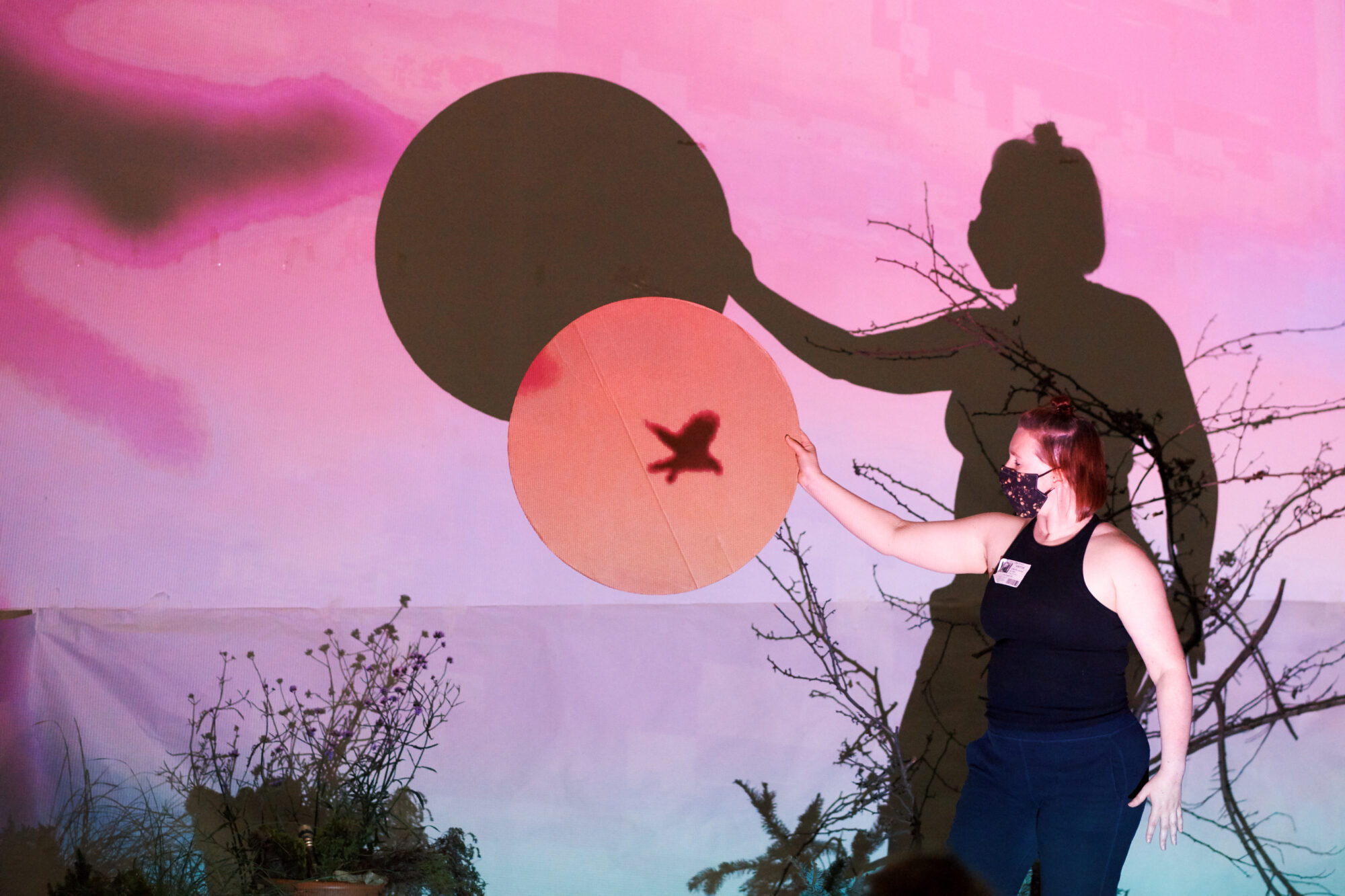How We Made When the World Turns: The Seed
Every so often you are part of a show that makes you want to linger in the imaginary world indefinitely, somehow there’s always more to discover. Although its more than 5 years since the inception of When the World Turns, to this day it continues to grow with a life of its own…
This is the first of two blogs by Oily Cart Artistic Director Ellie Griffiths, sharing how the show was made.

The Seed
The project began with the vision of Mary Harvey and Wendy O’Neill of Arts Centre Melbourne, who commissioned Oily Cart to collaborate with Polyglot Theatre to make a new piece of Sensory Theatre. Strategically, this was to change the fact that, at that point, there were no companies making theatre for children with multiple and complex barriers to access in the region.
As a new Artistic Director, who had long admired Polyglot’s practice, it was a dream gig to collaborate with former Director Sue Giles, who is a prolific theatre maker and thought leader in the field of theatre for young audiences. Both our practices are child-led theatre to the core, but we were working with different forms and methodologies, which provided scope for rich cross-fertilisation.
We quickly found a shared spark; dreaming up a show that honoured the atmosphere brought by young people most likely to be ‘parked’ in a theatre experience. Rushed past, because their responses and communication may be less recognisable to performers, and they appear to be more passive. We were motivated further by a conversation with a family who had a disabled child, who said they were often made to feel they didn’t belong in natural spaces. This came from not only a lack of physical access to wilder spaces for wheelchair users, but also a felt attitude from others that their way of being in the world somehow wasn’t ‘natural’. More than anything, we wanted to make a show that makes this audience feel that ‘you belong here’, and that belonging isn’t bound up in action or productivity.



Eco-Scenography
This led us to the work of the ecological designer Dr Tanja Beer, to join us as a core collaborator. Tanja is an award-winning designer and researcher who has established a new field of ecological stage design called ‘Eco-scenography’. When the World Turns was built around these principles of a circular way of making, where the sourcing and re-distribution at the end of a project is considered as rigorously as the event of sharing the work. (No small task for an immersive art-form that often uses a lot of ‘stuff’!)
Over several years of remote collaboration, across time and space, and many, many Zoom conversations with Sue and Tanja (that were stimulating, challenging, sometimes baffling and always fascinating), the show began to slowly take root. Each country hosted creative developments with local creative teams. One team would make a response to what had been created and explored in the other country.

Biophilic Patterns
A big lightbulb moment in the creative process for me was when Tanja introduced us to the biophilic patterns, which are patterns in nature that can be weaved into design, to create ‘living’ environments that have a soothing, regulating effect on people who spend time in them. We devised around these patterns, such as ‘dynamic and diffused light’, ‘presence of water’ and ‘risk and refuge’. These felt like such natural meeting points of our ecological and sensory practices.
The patterns became the basis of the design and content of the show. The set is made up of hundreds of live plants, who fill the atmosphere with fresh oxygen and natural scent, creating a living breathing sensory environment. Plants have more sensory receptors than humans, which I think creates the ultimate responsive environment. What the audience does affects what the performers do, which affects the plants, which affect how people in the space feel… one of my favourite things is seeing how different people (adults and children) look in their body language and faces when they leave the space, from when they went in. The effect is tangible and is a focus on Tanja’s ongoing research.

Read the second blog for more on the creative process, international collaboration, and how the show continues to grow…
When the World Turns, a collaboration between Oily Cart (UK) and Polyglot Theatre (AUS), was originally commissioned by Arts Centre Melbourne for arts and disability festival Alter State 2022.
